How many times have you grabbed something off the shelf, only to realize later it’s loaded with ingredients you can’t even pronounce? Yup, it happens to the best of us. That’s where food scanner apps come in – they’re like your personal food detective, making it super easy to scan a barcode and instantly know what’s really in your food. Calories, allergens, hidden sugars – you name it, these apps have your back. Let’s check out the smartest ones that you’ll want to download right away.
And while you’re on this quest to eat better, let’s not forget the real game-changer: cooking your own meals. With ReciMe, you can totally own your food choices. Our recipe organizer app makes meal planning a breeze. Just grab recipes from anywhere (Instagram, TikTok, even your notes!) and voilà – your grocery list is ready, organized by aisle. Ready to level up your kitchen game? Join the 5M+ users already transforming how they eat with ReciMe. Now, let’s dive into those food scanner apps!


1. Yuka
Yuka is a super helpful, free app that helps you figure out what’s in your food and how it could affect your health. Simply scan a product’s barcode, and you’ll get a color-coded rating that tells you whether your food is a win or a bust. The app looks at nutrition, additives, and even whether it’s organic, so you get a quick, simple breakdown. If your item’s not the healthiest, Yuka will even suggest better alternatives for you.
It all started in France back in 2017, when the founders wanted to make food labels less confusing, especially for busy parents trying to feed their kids well. It’s grown massively, with millions of users scanning everything from snacks to cosmetics (yup, it works on beauty products too). Yuka is all about giving you clear info to help you make smarter choices at the grocery store.
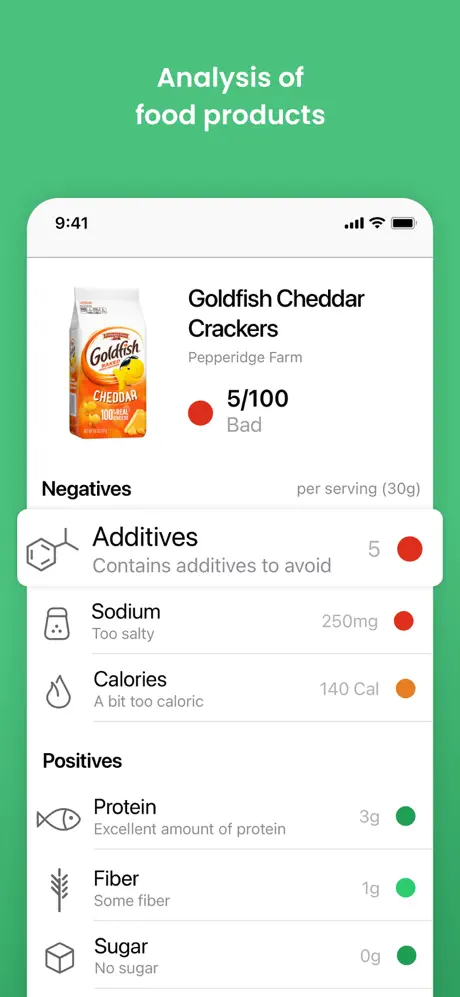
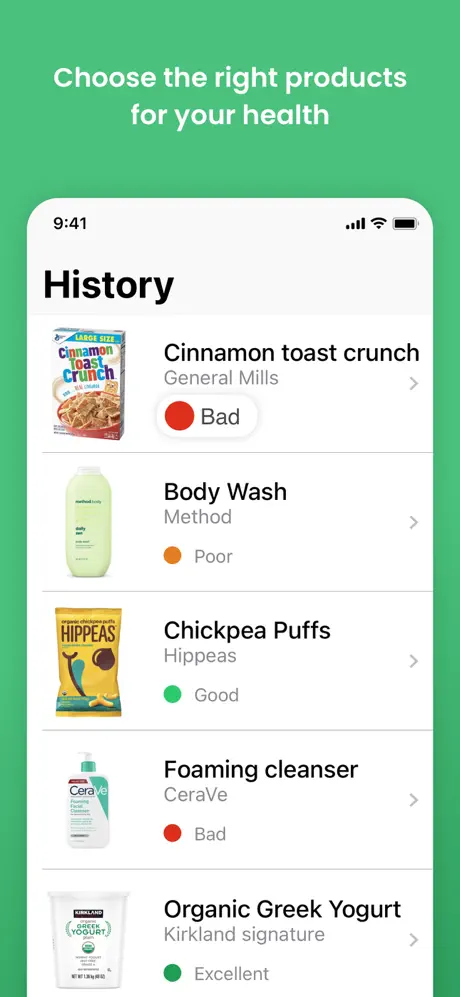
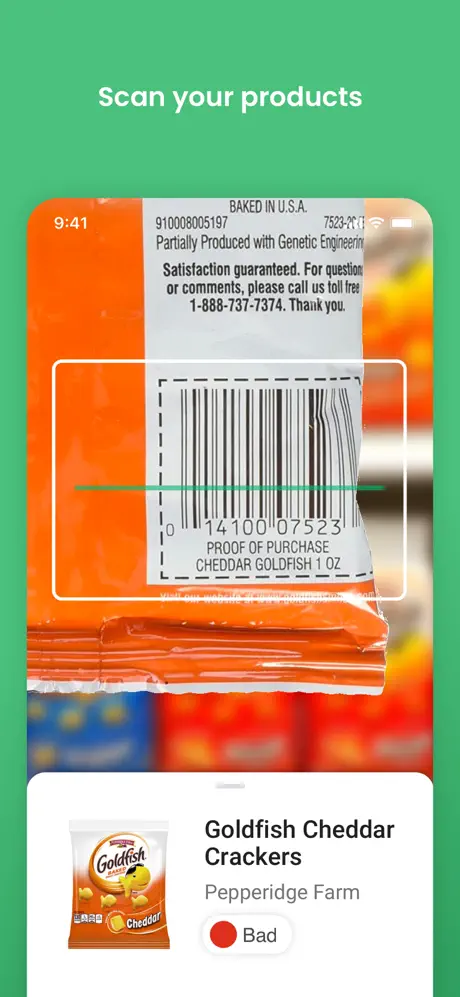
Key Highlights:
- Scans barcodes and gives health ratings based on nutrition, additives, and organic factors.
- Uses a color-coded system (green = good, red = not-so-good).
- Suggests healthier swaps if your item doesn’t make the cut.
- Covers everything from food to beauty products.
- Totally free to use, with optional premium features.
Who It’s For:
- People who want a quick health check without reading tiny labels.
- Shoppers curious about additives and hidden ingredients.
- Parents looking to make healthier food choices for their families.
- Anyone who prefers a simple, no-fuss tool to navigate confusing packaging.
Contact Information:
- Website: yuka.io
- App Store: apps.apple.com/us/app/yuka-food-cosmetic-scanner/id1092799236
- Play Market: play.google.com/store/apps/details?id=io.yuka.android
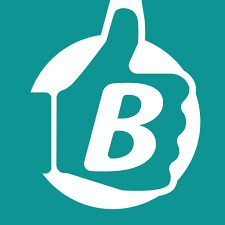
2. Bobby Approved
If you’re all about clean eating, Bobby Approved is the app for you. Created by chef Bobby Parrish, this app lets you scan barcodes and highlights ingredients he doesn’t approve of (like artificial flavors, dyes, or seed oils) in red. It’s based on his list of over 100 ingredients he avoids, so if it’s on his no-go list, you’ll know.
Bobby Approved keeps it simple – no unnecessary chatter, just a quick heads-up on what to skip. It’s like having a friend who’s super picky about what’s in their food giving you advice while you shop.
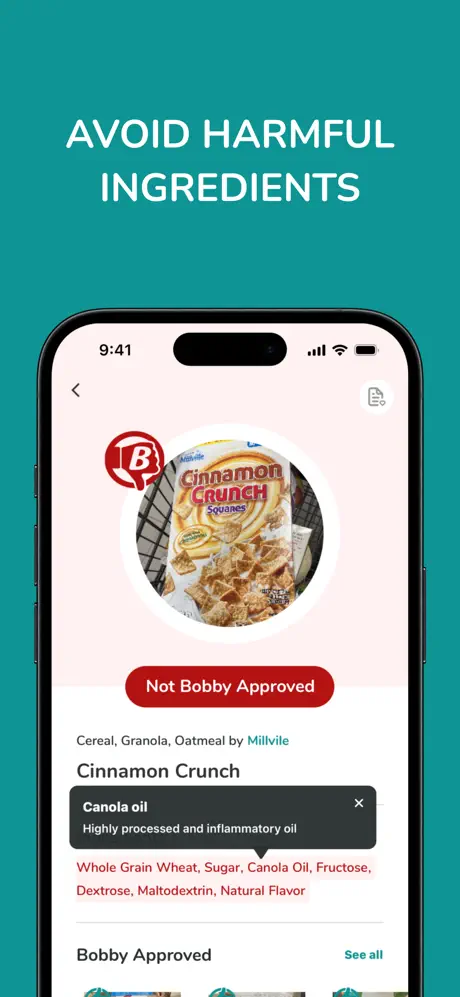
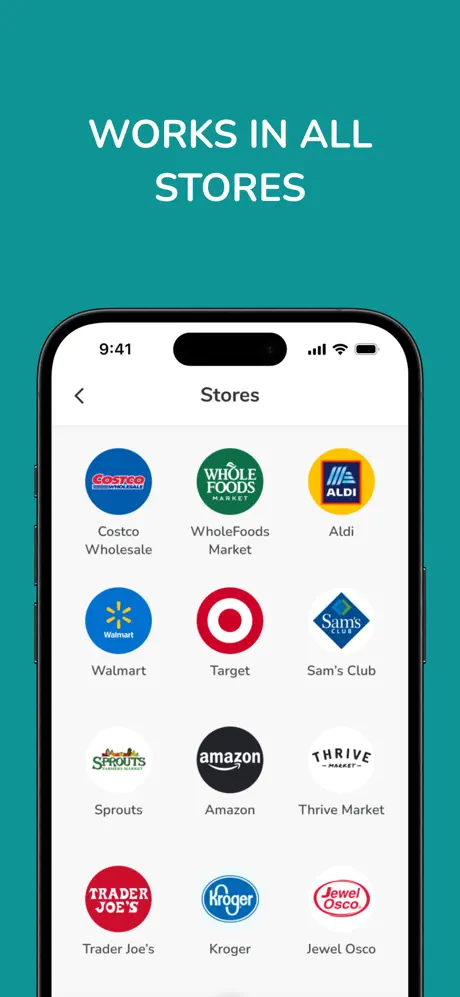
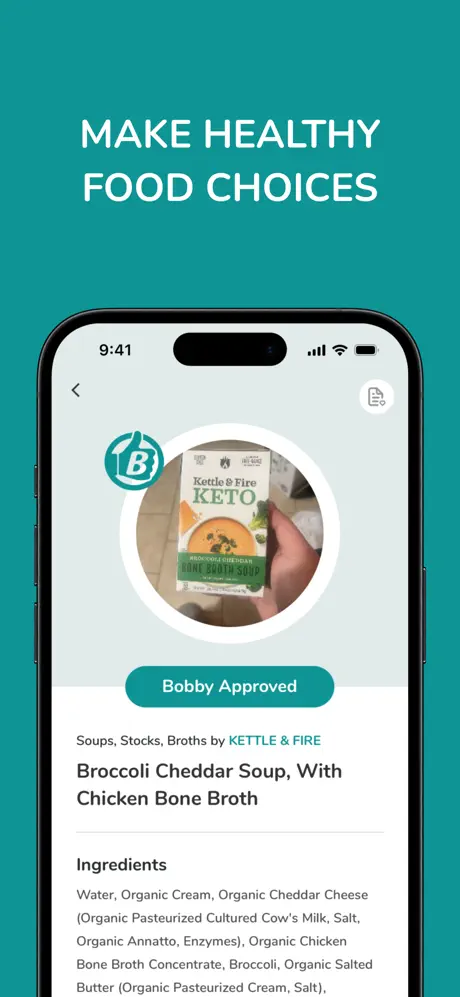
Key Highlights:
- Flags over 100 ingredients like additives and oils in red.
- Simple barcode scan to check if it’s clean or not.
- Based on Bobby Parrish’s clean-eating principles.
- Free to use, no hidden costs.
Who It’s For:
- Clean-eating fans who trust Bobby’s picks.
- People avoiding artificial ingredients in food.
- Shoppers who want a straightforward tool to help them eat clean.
- Anyone cutting out processed foods.
Contact Information:
- Website: www.flavcity.com/bobbyapproved
- App Store: apps.apple.com/us/app/bobby-approved-food-scanner/id1571725006
- Play Market: play.google.com/store/apps/details?id=com.bobbyapproved
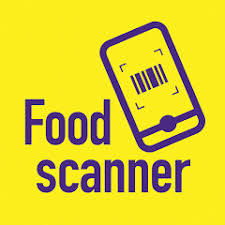
3. NHS Food Scanner App
If you’re in the UK, the NHS Food Scanner App is your go-to for better eating. This free app shows you how much sugar, salt, and fat is in your food, using a traffic-light system (green, amber, red). It even adds a fun twist with animated visuals, like sugar cubes or blobs of fat, to show you exactly what you’re eating – especially great for getting kids involved!
It also suggests healthier swaps, so you can easily pick a better option. Plus, it’s backed by the National Health Service, which means you can trust the data.
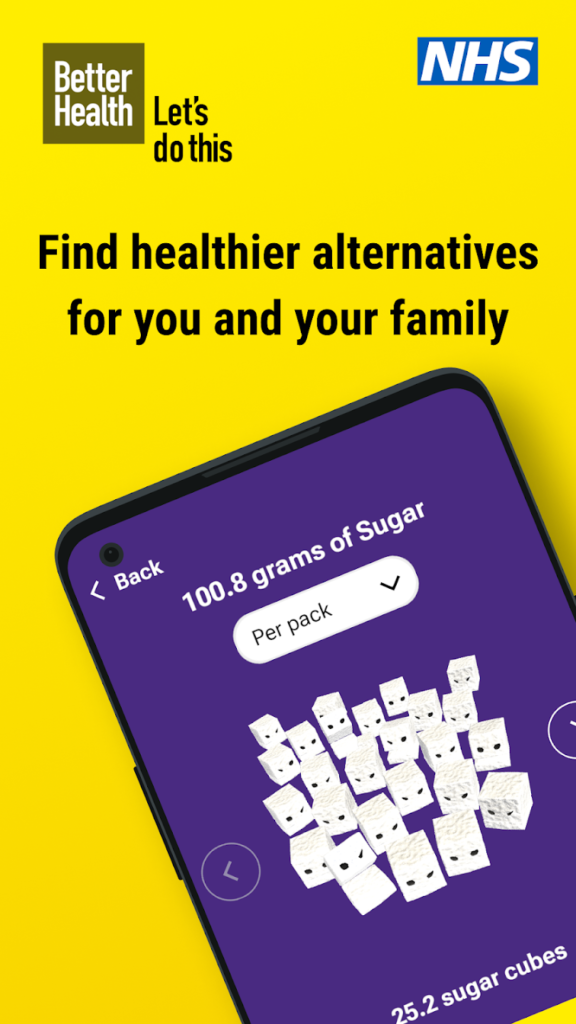
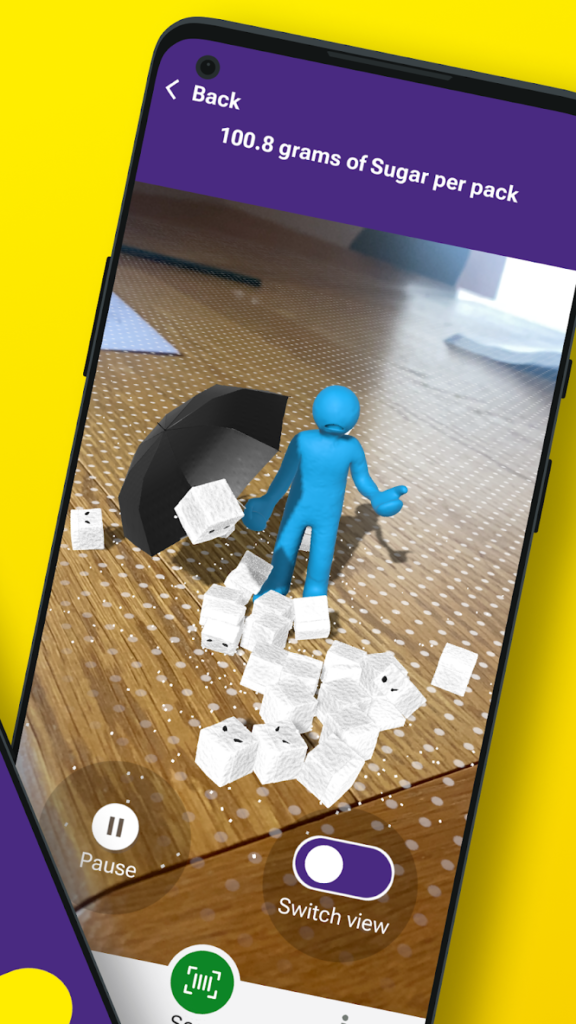
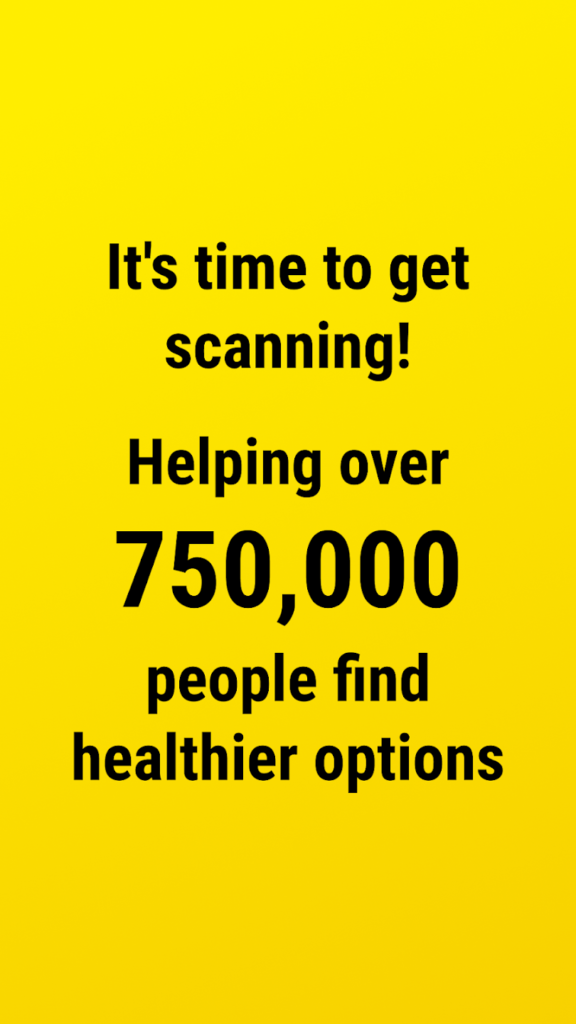
Key Highlights:
- Traffic-light ratings for sugar, salt, and fat.
- Visual AR feature shows nutrient amounts.
- Free, with reliable data from the NHS.
- Keeps track of your scans.
Who It’s For:
- UK families who want to cut down on junk.
- Parents teaching kids about healthy eating in a fun way.
- Shoppers who like official, easy-to-understand guidance.
- Anyone who prefers visual tools over raw numbers.
Contact Information:
- Website: www.nhs.uk
- App Store: apps.apple.com/gb/app/nhs-food-scanner/id1182946415
- Play Market: play.google.com/store/apps/details?id=com.phe.c4lfoodsmart
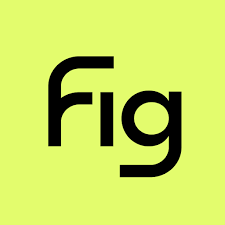
4. Fig App
Fig App is perfect for anyone with dietary restrictions or allergies. Set up your profile with the ingredients you want to avoid (like gluten, dairy, or nuts), and Fig will flag any foods that don’t match your needs. It even checks restaurant menus if you’re eating out.
With a no-judgment approach, Fig makes it easy to shop or dine out without stress. The free version covers the basics, but you can unlock even more features with a paid upgrade.
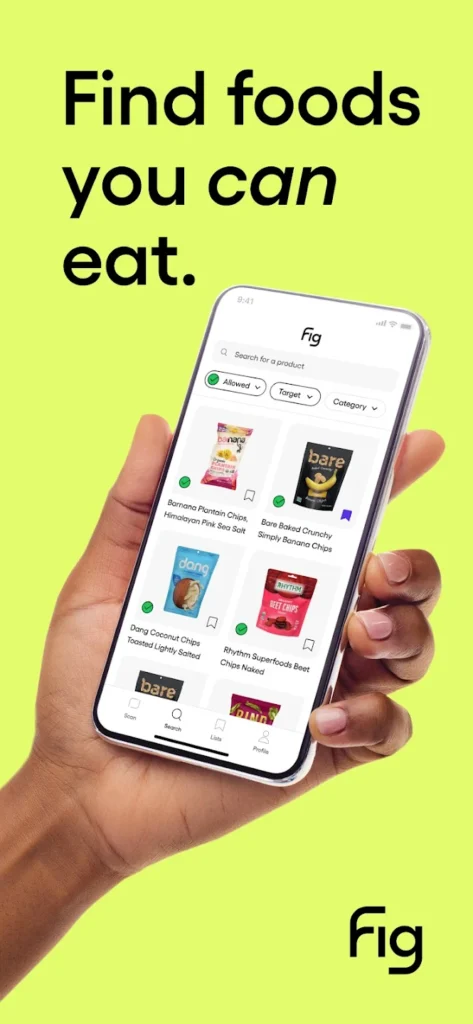
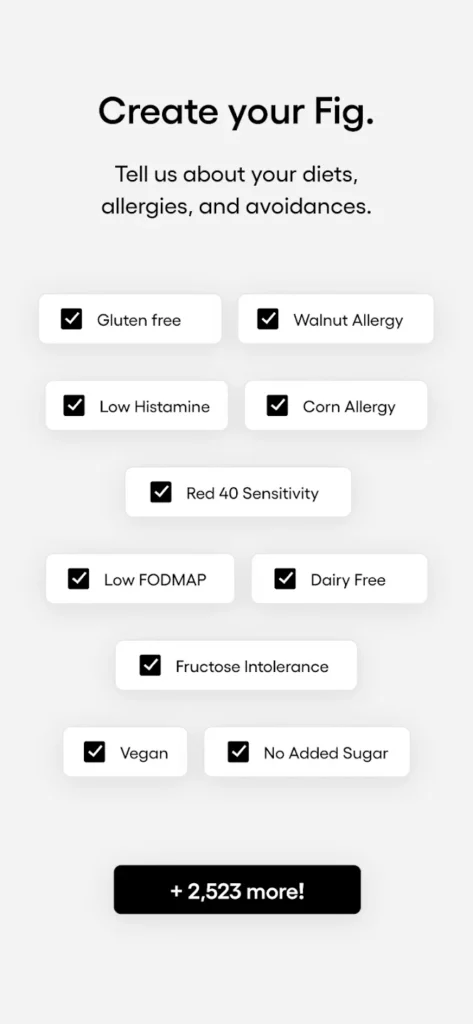
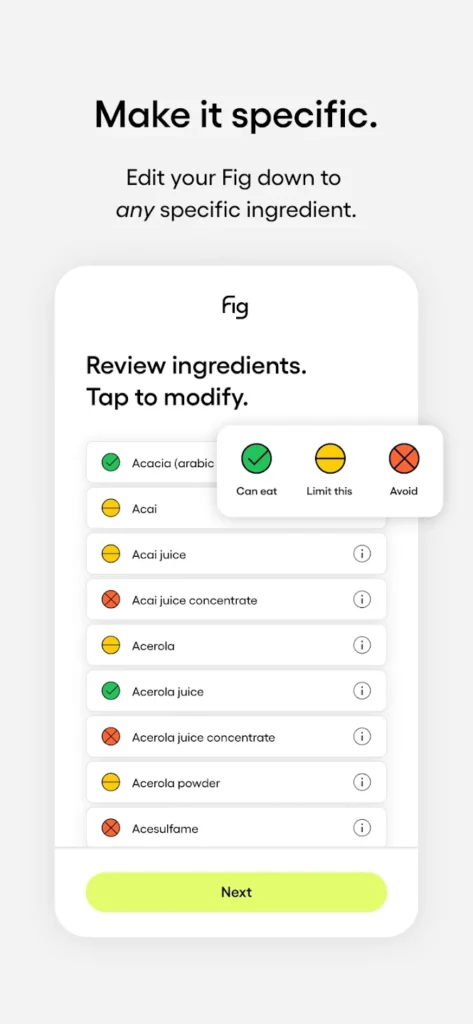
Key Highlights:
- Flags foods based on your personal avoid list.
- Works with packaged foods and restaurant menus.
- Uses a large product database to make sure your info’s accurate.
- Free with an option for premium features.
Who It’s For:
- People with allergies or strict diets.
- Diners who need to double-check menus.
- Shoppers who want a personalized food filter.
- Anyone tired of scanning long ingredient lists.
Contact Information:
- Website: foodisgood.com
- App Store: apps.apple.com/us/app/fig-food-scanner-discovery/id1564434726
- Play Market: play.google.com/store/apps/details?id=com.fig
- Facebook: www.facebook.com/groups/1046907482502189
- Instagram: www.instagram.com/foodisgoodco
- Linkedin: www.linkedin.com/company/fig-food-is-good
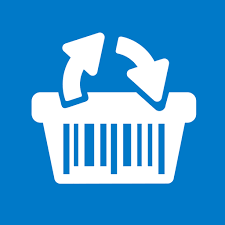
5. FoodSwitch
FoodSwitch, developed by The George Institute, is all about giving you the real deal on packaged foods. It scans barcodes and gives each food a Health Star Rating (from 0.5 to 5 stars), plus traffic-light labels for fat, sugar, and salt. If you’re looking for healthier alternatives, it’ll suggest options you might want to try.
It’s a no-strings-attached, free tool that’s perfect for data lovers who want to make informed decisions without the drama.
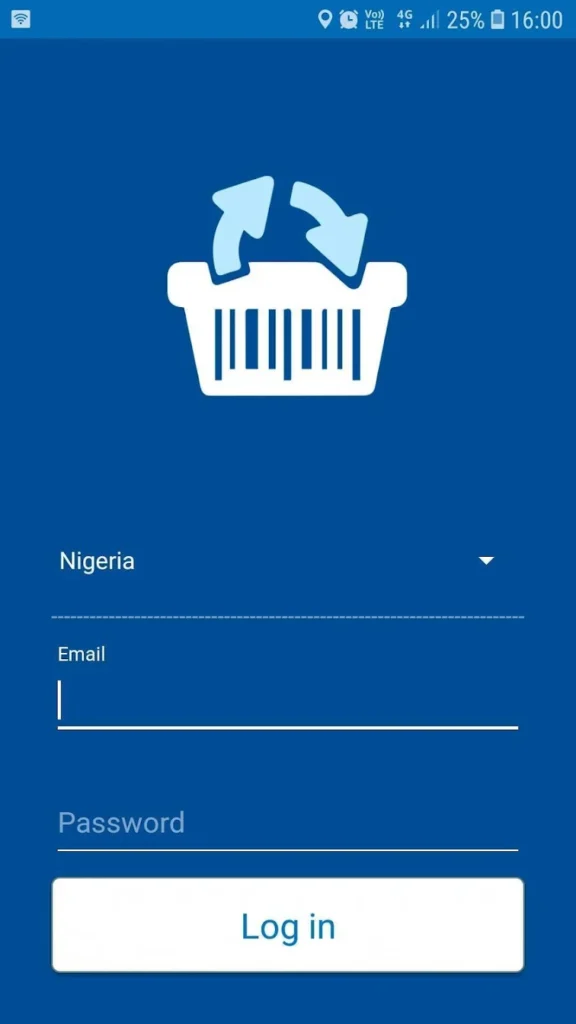
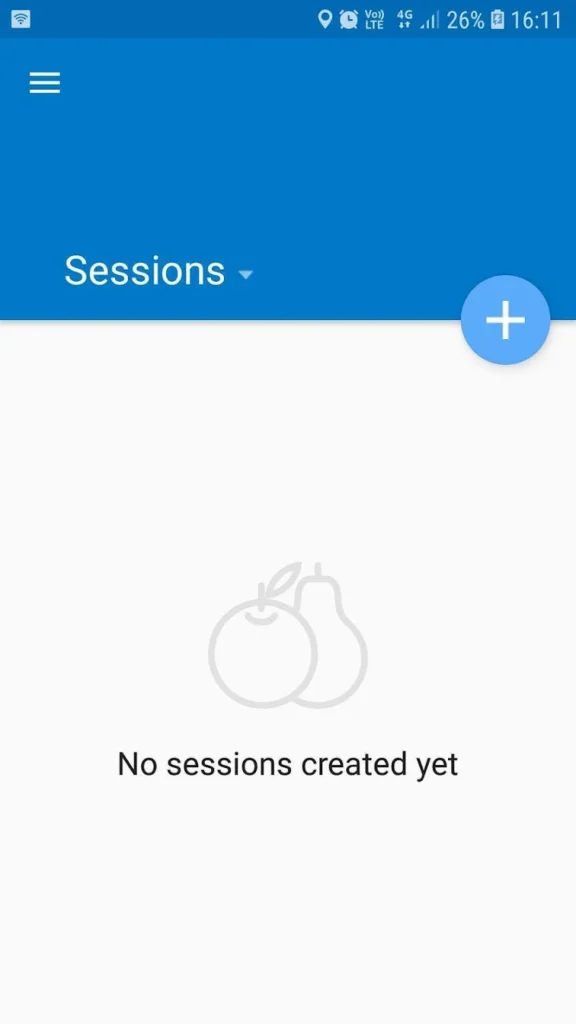
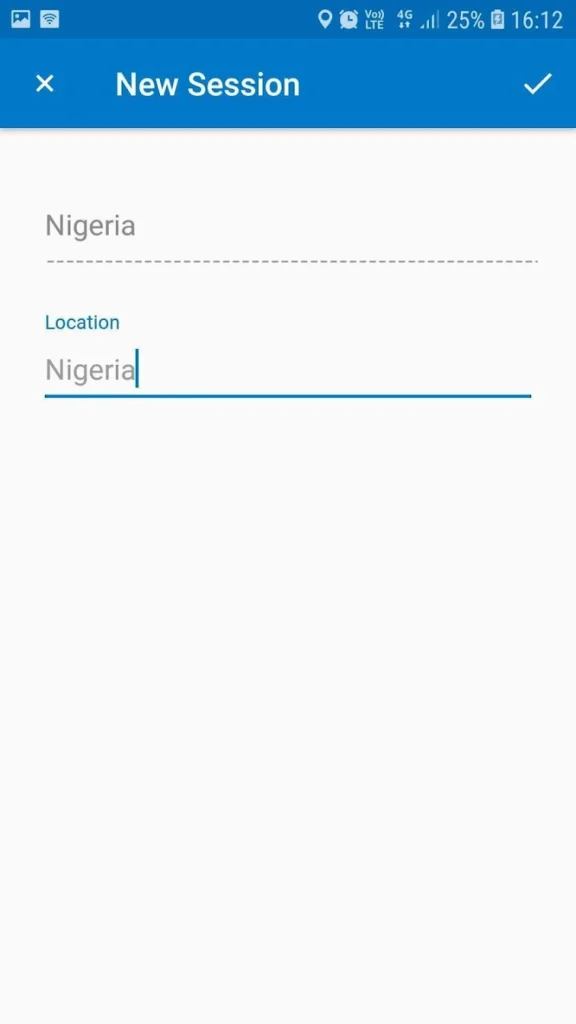
Key Highlights:
- Health Star Ratings from 0.5 to 5 stars for overall health.
- Traffic-light labels for key nutrients like fat, sugar, and salt.
- Suggests healthier alternatives.
- Free, with optional filters for salt, sugar, or energy focus.
Who It’s For:
- Data lovers who love ratings and comparisons.
- Shoppers looking for science-backed food swaps.
- People watching specific nutrients like salt.
- Anyone who prefers clear, no-hype food info.
Contact Information:
- Website: www.foodswitch.com
- Address: Level 18, International Towers 3, 300 Barangaroo Ave, Barangaroo 2000 NSW
- Phone: +61 2 8052 4300
- Email: info@georgeinstitute.org.au
- App Store: apps.apple.com/us/app/foodswitch/id1059284559
- Play Market: play.google.com/store/apps/details?id=com.foodswitch.android
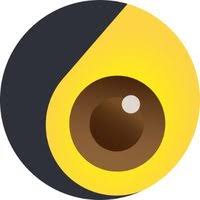
6. JollyGut
JollyGut’s got a little local flavor – you tell it where you’re at, and it’ll scan barcodes to show you what’s available nearby. You can set up your “no-go” foods (think dairy or gluten) and get a heads-up on whether your scan is a winner or a bust. It also rates your finds, from “excellent” to “very bad,” based on how healthy they are.
The free version is perfect for quick scans, and it has that neighborly feel – like a friend who knows the local aisles and gives you a nudge in the right direction. It’s not all about stats; it’s about what you can actually grab from your local stores.
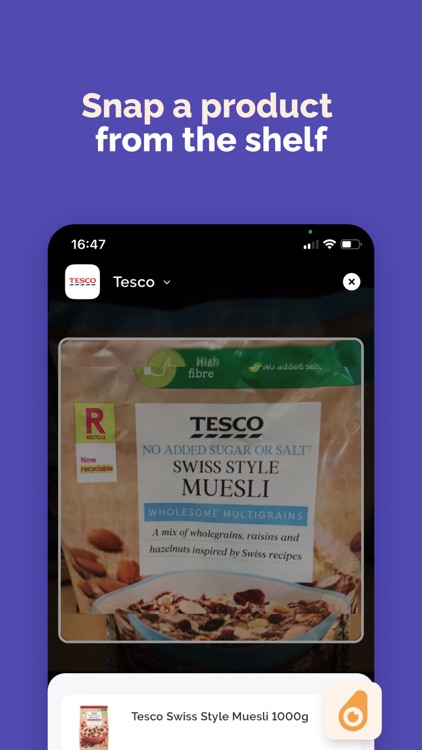
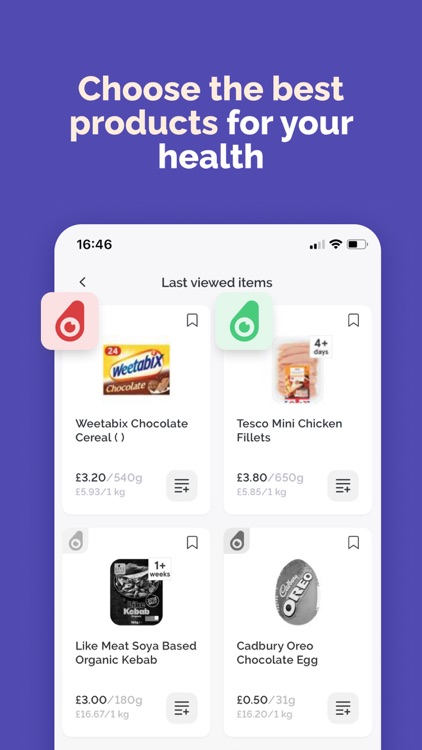
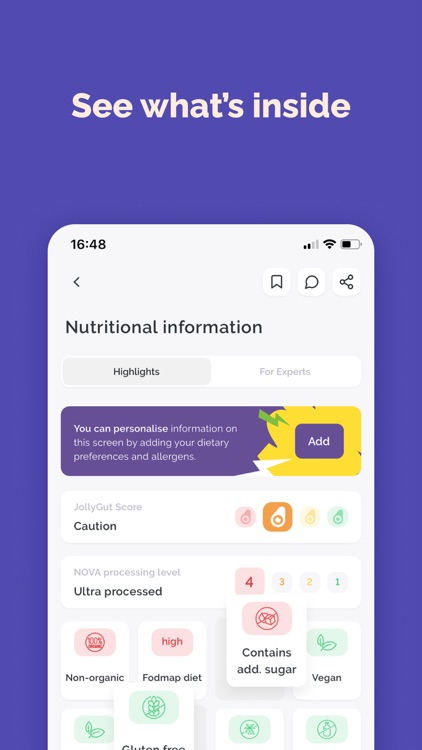
Key Highlights:
- Check what’s in stock at nearby stores based on your location.
- Flags ingredients you want to avoid.
- Rates foods from excellent to very bad.
- Free for basic scanning features.
- Works with local grocery options.
Who It’s For:
- Locals who shop at familiar stores.
- People with specific food restrictions.
- Shoppers who prefer local health ratings.
- Anyone looking for practical, nearby food recommendations.
Contact Information:
- Website: jollygut.com
- Instagram: www.instagram.com/jollygutapp
- Twitter: x.com/jollygut
- Facebook: www.facebook.com/jollygutapp
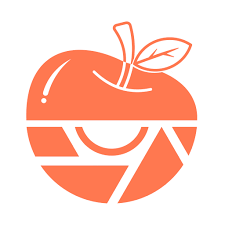
7. SnapCalorie
SnapCalorie is all about snapping pics of your food to estimate calories and nutrients. Whether it’s a packaged snack or a homemade meal, the app uses AI to give you a quick rundown. The free version offers a basic estimate, but keep in mind, accuracy depends on how good the picture is.
With its techy, modern vibe, it feels like your phone is playing food detective. No need for barcodes – just snap and go. It focuses on the big picture of what you’re eating, rather than getting into the nitty-gritty of ingredients.
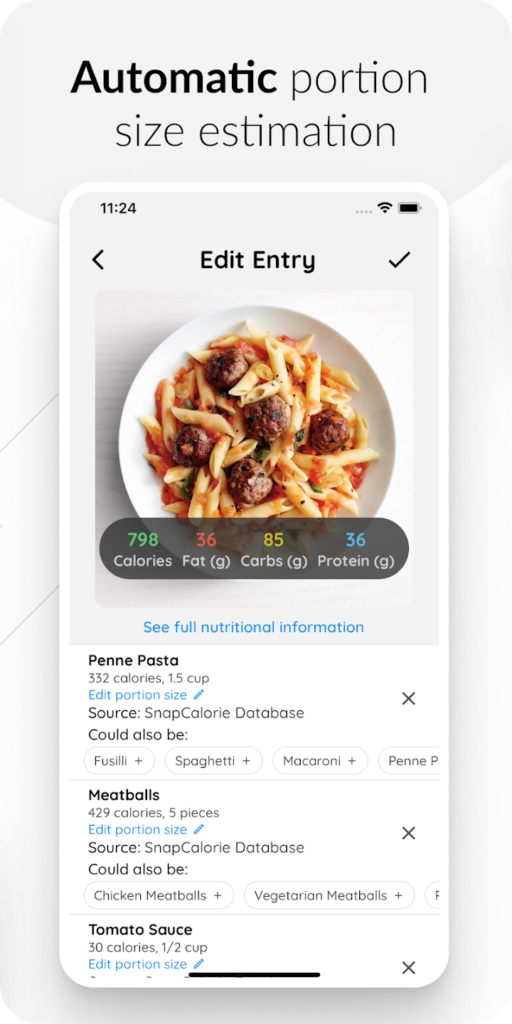
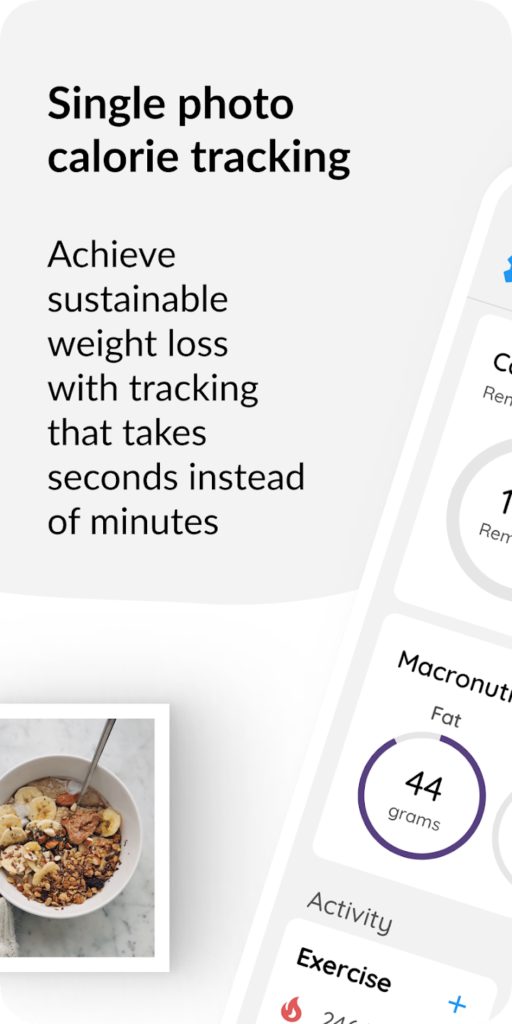
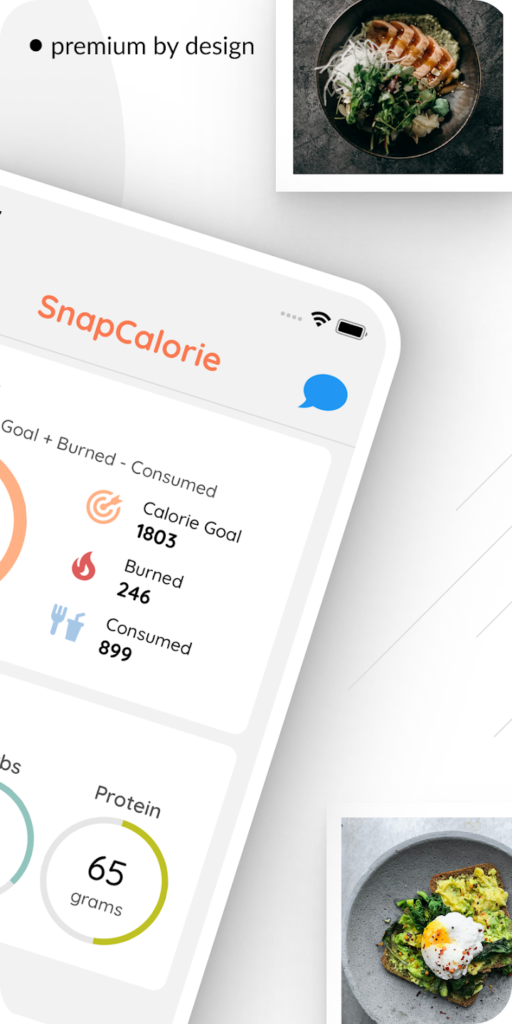
Key Highlights:
- Estimates calories and nutrients from photos.
- Works for both packaged and cooked foods.
- Free for basic use with AI-driven estimates.
- No barcode needed – just snap and go.
- Focuses on overall food totals, not individual ingredients.
Who It’s For:
- People who prefer taking photos over scanning barcodes.
- Home cooks curious about their meal stats.
- Anyone okay with rough estimates.
- Tech lovers into AI-driven food tricks.
Contact Information:
- Website: www.snapcalorie.com
- Email: help@snapcalorie.com
- App Store: apps.apple.com/us/app/snapcalorie-ai-calorie-counter/id1574239307
- Play Market: play.google.com/store/apps/details?id=com.snapcalorie.alpha002
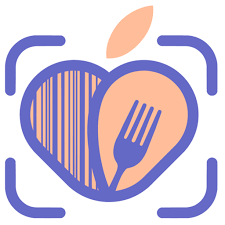
8. Food Scan Genius
Food Scan Genius is another barcode scanner that focuses on nutrition and ingredients. Scan a product, and it will pull up the calories, macros, and any additives or allergens it detects. It’s connected to a solid database, although not as massive as some others. But it keeps things simple – no frills, just the facts.
With a relaxed, no-pressure vibe, this app feels like a helpful friend showing you what’s really inside your food, without complicating things.
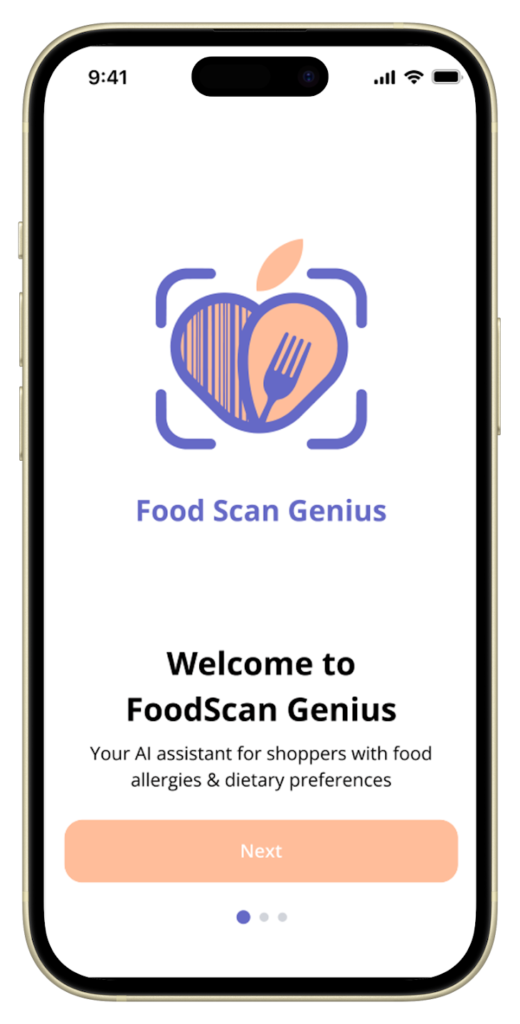
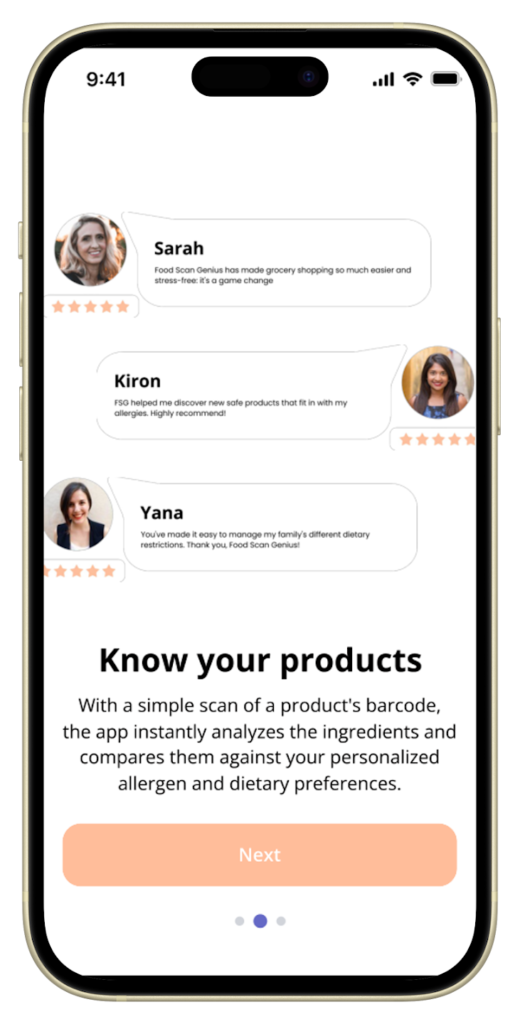
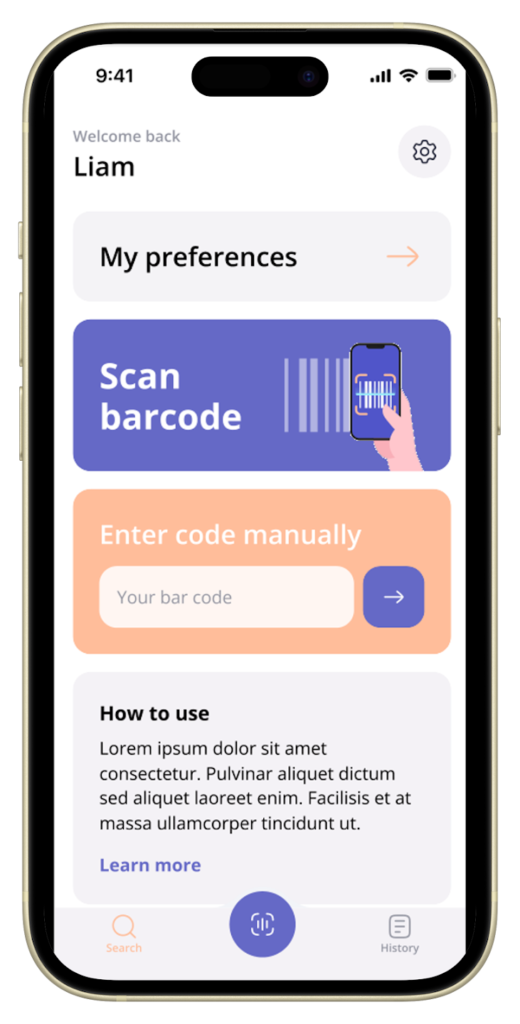
Key Highlights:
- Shows calories, macros, additives, and allergens.
- Barcode-based, with a straightforward scan.
- Free with no upsells or gimmicks.
- Decent database for common products.
- Clean and simple interface.
Who It’s For:
- Shoppers looking for quick nutrition basics.
- Allergy-conscious folks who need a fast peek.
- Anyone who likes simple, free tools.
- People who don’t want a bunch of extra features.
Contact Information:
- Website: scangeni.us
- App Store: apps.apple.com/us/app/food-scan-genius/id6740920516
- Play Market: play.google.com/store/apps/details?id=com.mycompany.fsgproject
- Facebook: www.facebook.com/foodsc.angenius
- Twitter: x.com/FoodScanGenius
- Instagram: www.instagram.com/foodscangenius

9. Trash Panda App
Trash Panda App takes a unique approach by scanning barcodes and showing you how processed your food is. It breaks down the ingredients, flags anything questionable, and explains why it matters – like if it’s an additive or allergen. The free version covers the basics with a clean, easy-to-follow design.
It’s got the vibe of your eco-conscious friend who’s always diving into food labels, helping you figure out if your food is legit or if it’s too far into the junk zone.
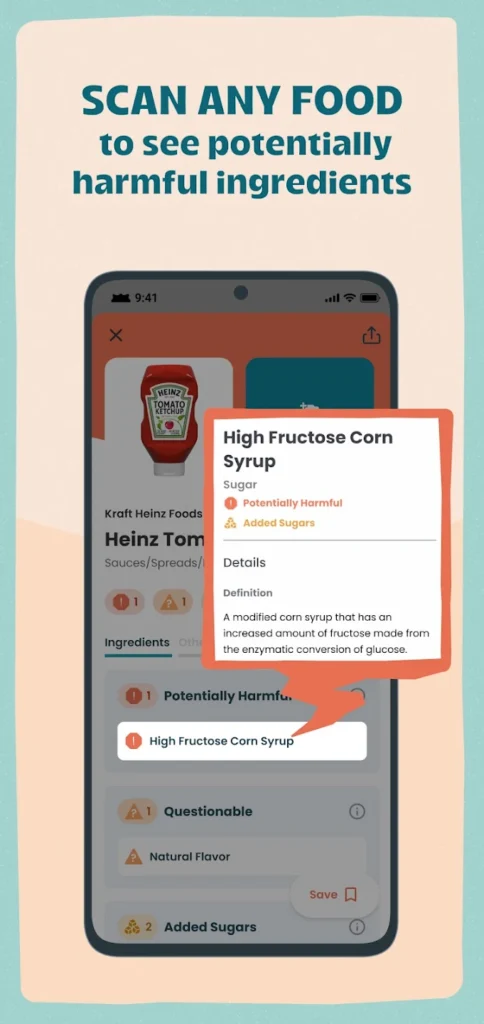

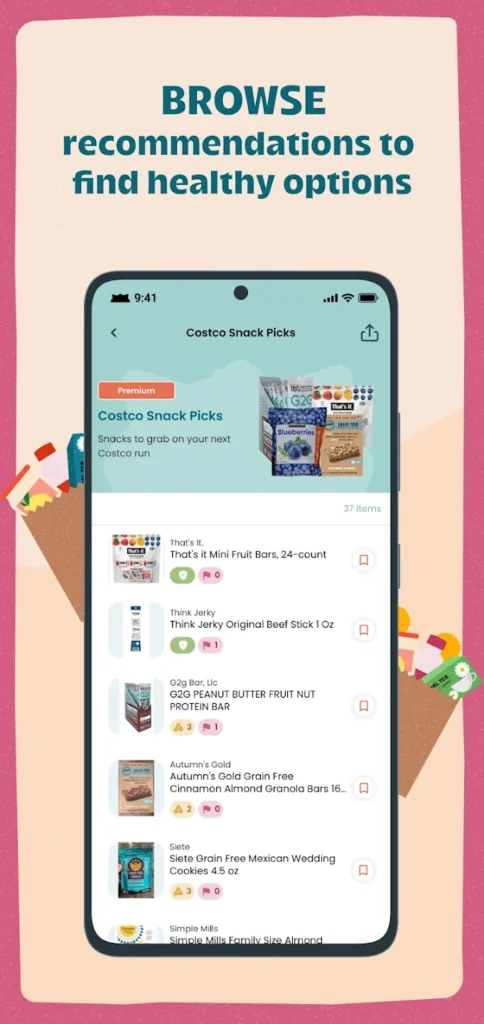
Key Highlights:
- Focuses on processing levels and ingredients.
- Flags additives or allergens, with explanations.
- Free for basic scanning and insights.
- Simple, user-friendly layout.
- Prioritizes food quality over numbers.
Who It’s For:
- People who prefer less-processed foods.
- Shoppers curious about ingredient lists.
- Those who need to check for allergies or sensitivities.
- Anyone who enjoys a clear, no-nonsense breakdown.
Contact Information:
- Website: www.trashpandaapp.com
- App Store: apps.apple.com/us/app/trash-panda-food-scanner/id1539759995
- Play Market: play.google.com/store/apps/details?id=com.slytrunk.trashpanda
- Twitter: x.com/trash_panda_app
- Tiktok: www.tiktok.com/@trashpanda_app
- Instagram: www.instagram.com/trashpanda_app

10. Processed App
Processed App is all about showing you how processed your food really is. Scan a barcode, and it categorizes it as “real,” “moderately processed,” or “ultra-processed.” It’s free, simple, and doesn’t get bogged down in details – just gives you the quick rundown on what’s in your hand.
It’s like that straightforward friend who tells it like it is – no fluff, just “this is good” or “this is junk.” Perfect if you’re looking to keep it real without getting too deep into the stats.
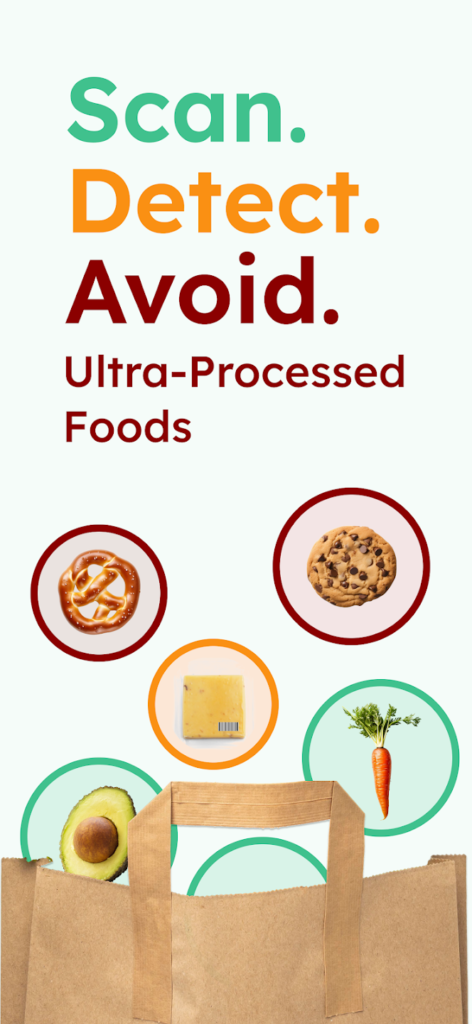
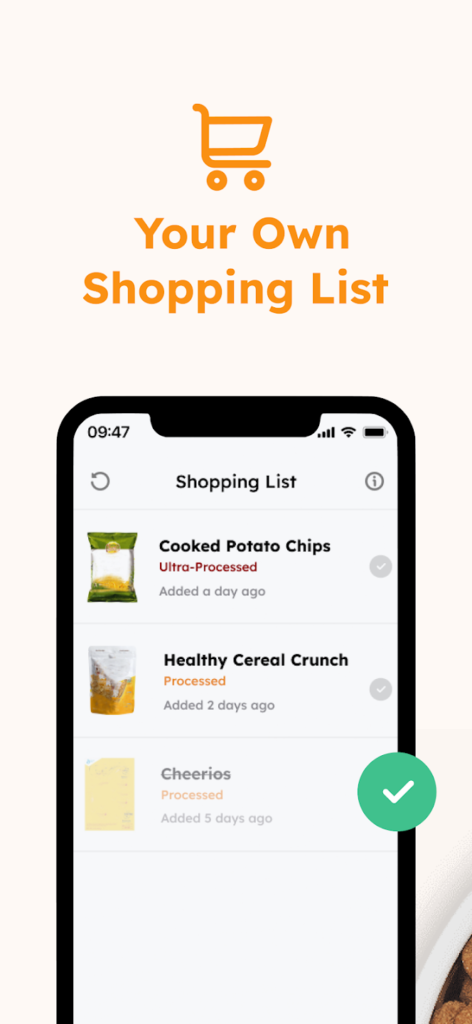
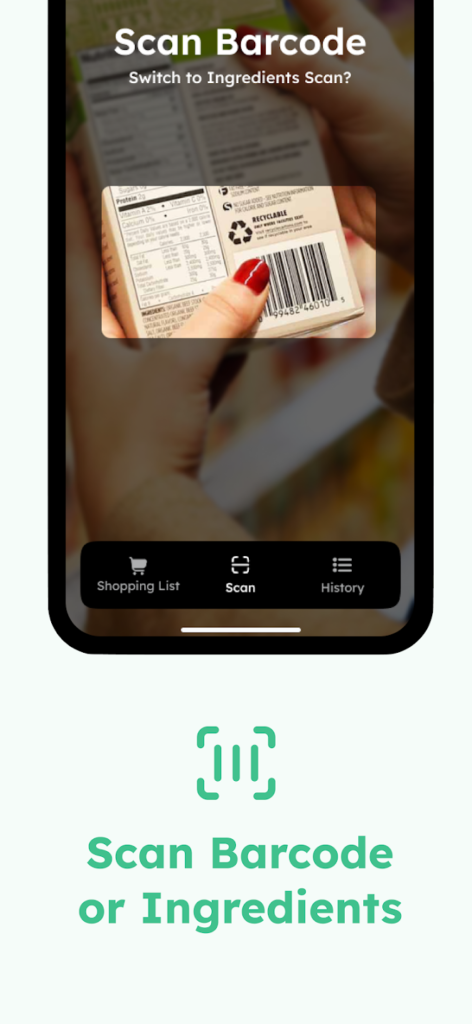
Key Highlights:
- Categorizes food as real, moderately processed, or ultra-processed.
- Quick barcode scan for instant results.
- Free with an ultra-simple setup.
- No deep dives into nutrition – just the processing level.
- Fast and straightforward.
Who It’s For:
- Minimalists who want to avoid processed foods.
- Shoppers looking for a quick “gut check” on what’s in their cart.
- People who aren’t into nutrition breakdowns.
- Anyone into keeping things real with whole foods.
Contact Information:
- Website: processedapp.com
- App Store: apps.apple.com/us/app/processed-food-scanner-app/id6463756186
- Play Market: play.google.com/store/apps/details?id=com.processedapp.processed

11. Noom
Noom is all about tracking your food, not judging it. The app scans barcodes to help you log calories and nutrients, but it’s more about awareness than rules. Foods are tagged with colors (green, yellow, red) based on their calorie density – no “good” or “bad” labels here. It’s been around since 2008, originally just for calorie counting, but now it blends in a bit of psychology to help you build healthier habits.
It’s like having a coach who’s chill but keeps you on track. The free version is great for scanning and logging, and if you want more, the paid version adds coaching and meal plans. But the basics? Totally doable without paying.
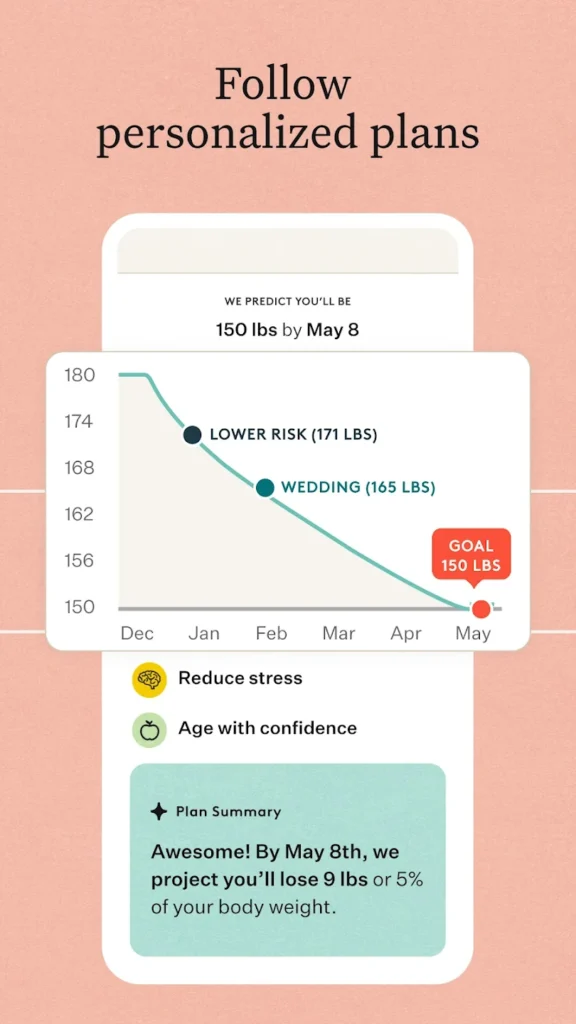
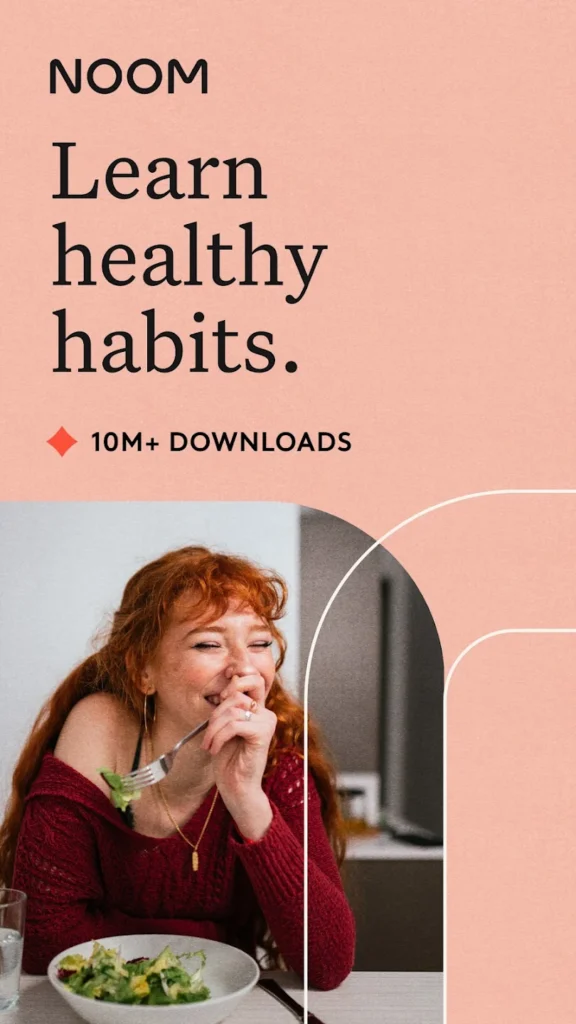

Key Highlights:
- Tracks calories and nutrients with color tags.
- No judgment – just awareness.
- Free for logging and basic use.
- Ties into a broader, healthier mindset.
- Simple and goal-focused design.
Who It’s For:
- People who love logging meals.
- Anyone into calorie awareness.
- Beginners trying out health apps.
- Folks who prefer chill guidance without pressure.
Contact Information:
- Website: www.noom.com
- App Store: apps.apple.com/us/app/noom-weight-loss-food-tracker/id634598719
- Play Market: play.google.com/store/apps/details?id=com.wsl.noom
- Instagram: www.instagram.com/noom
- Linkedin: www.linkedin.com/company/noom
- Facebook: www.facebook.com/noom
- Twitter: x.com/noom
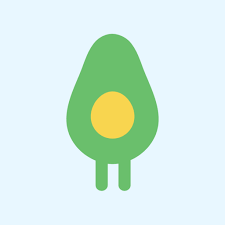
12. Foodvisor
Foodvisor takes things up a notch by letting you snap pictures or scan barcodes to break down your food’s calories and macros. It uses AI to guess what’s on your plate, whether it’s a pre-packaged snack or something you cooked yourself, and gives you a quick rundown of protein, carbs, and fats. You can set your goals, and it personalizes the info just for you.
It has a sleek, techy feel like your phone’s doing the heavy lifting. The free version is great for quick looks, while the premium features unlock more detailed tracking.
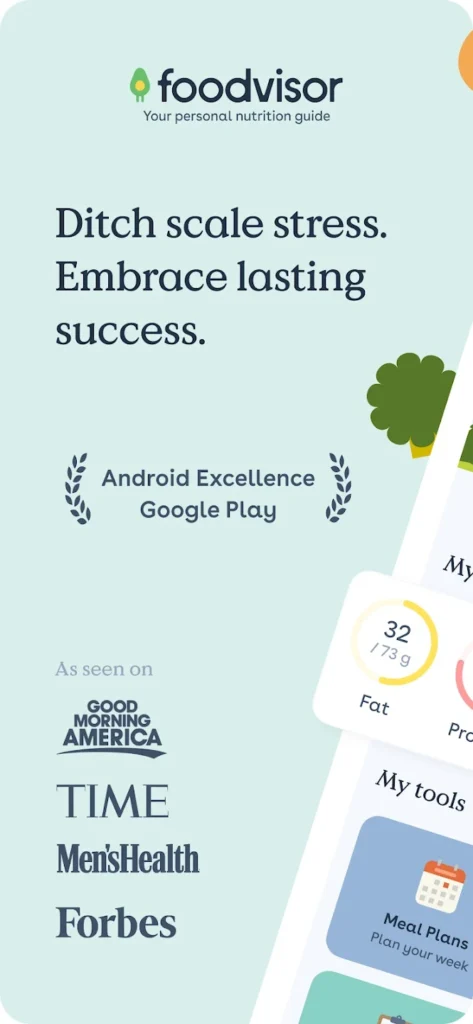
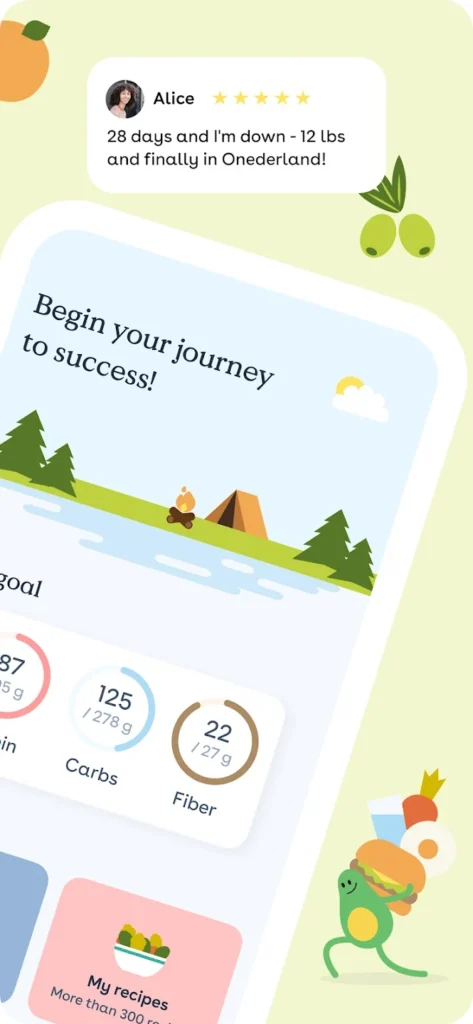
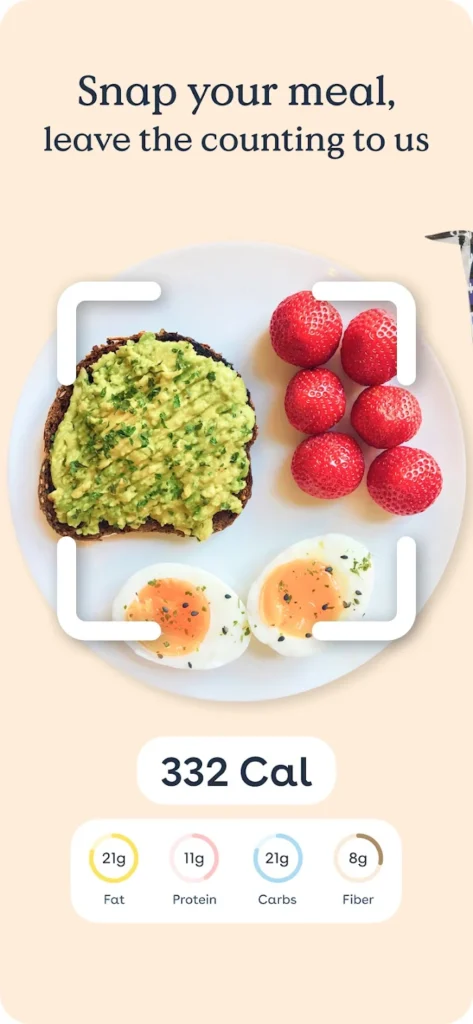
Key Highlights:
- Snap photos or scan barcodes for nutrition info.
- AI estimates calories, macros, and more.
- Free for basic tracking and scans.
- Personalizes based on your goals.
- Clean, modern interface.
Who It’s For:
- Fans of visual tracking.
- Goal-setters who want specific macro info.
- Tech lovers into AI-powered tools.
- People who don’t mind a few limits on the free version.
Contact Information:
- Website: www.foodvisor.io
- App Store: apps.apple.com/us/app/foodvisor-calorie-counter/id1064020872
- Play Market: play.google.com/store/apps/details?id=io.foodvisor.foodvisor
- Instagram: www.instagram.com/foodvisor
- Linkedin: www.linkedin.com/company/foodvisor
- Facebook: www.facebook.com/foodvisor
- Twitter: x.com/foodvisor_app

13. CodeCheck
CodeCheck is perfect for anyone who wants to know exactly what’s in their food – and beyond. It scans barcodes on food, cleaners, and even beauty products to give you the scoop. It flags if an item’s vegan, gluten-free, or has allergens, pulling from a big, reliable database. The free version is straightforward – scan, check, and move on – while the premium version offers unlimited scans and removes ads.
It’s like that curious friend who’s always flipping packages over to read the fine print. No deep analysis, just clear info to help you decide what you’re dealing with.
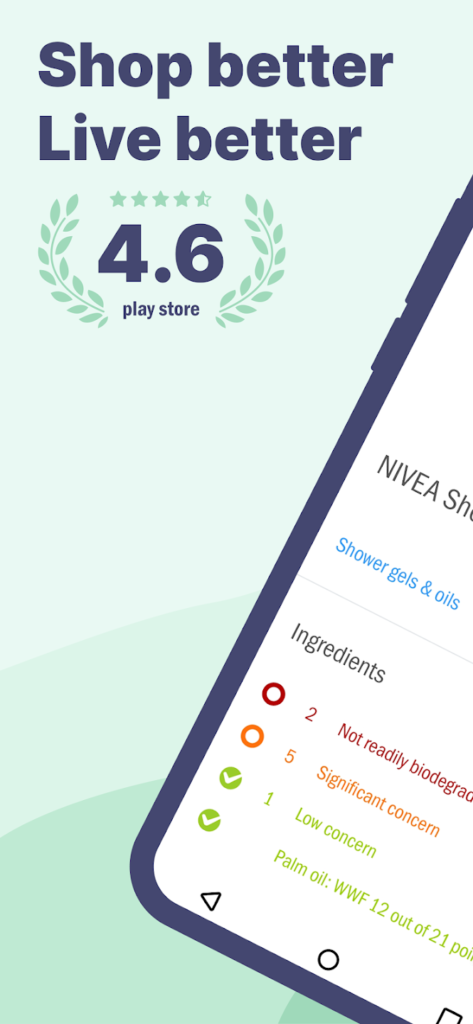
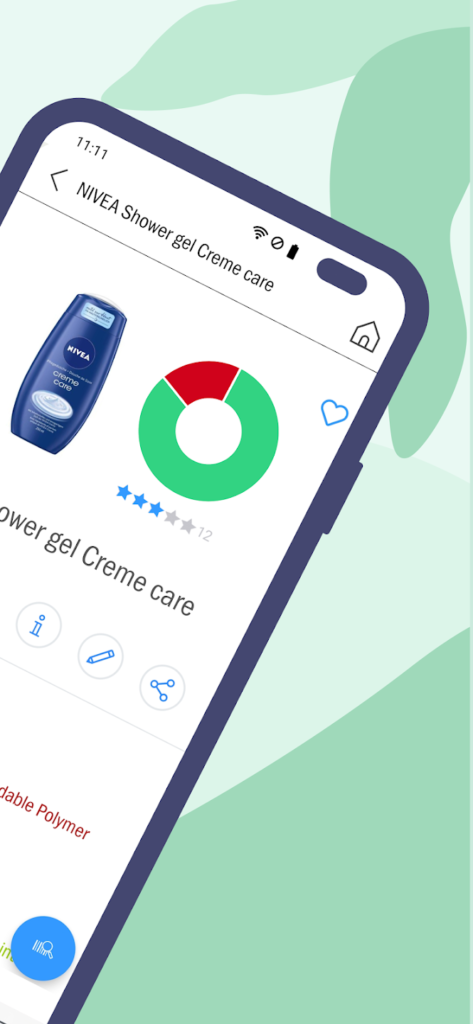
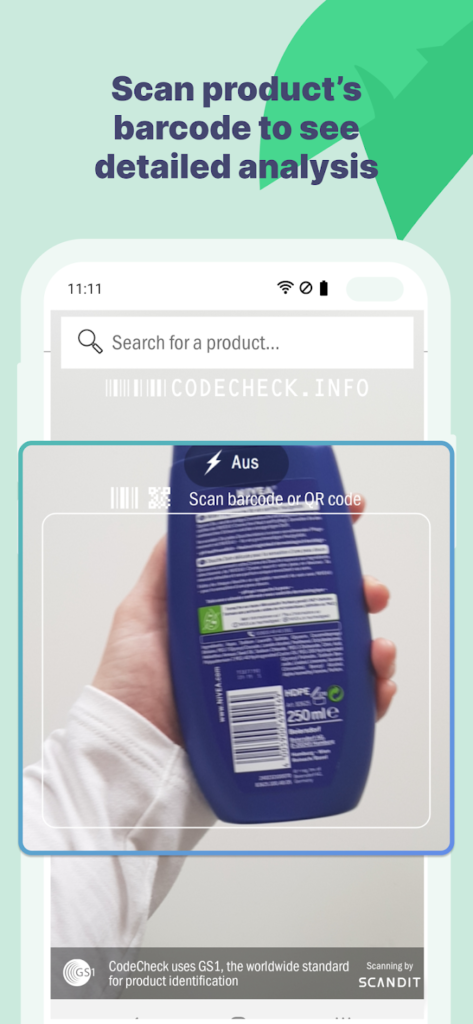
Key Highlights:
- Scans food, beauty products, and cleaners.
- Flags dietary needs like vegan or gluten-free.
- Free version with a solid database.
- Simple, no-nonsense results.
- Covers more than just food.
Who It’s For:
- People with dietary restrictions.
- Anyone who checks more than just food labels.
- Curious types who like broad scans.
- People who prefer easy, free tools.
Contact Information:
- Website: codecheck-app.com
- App Store: apps.apple.com/de/app/codecheck-product-scanner/id359351047
- Play Market: play.google.com/store/apps/details?id=ch.ethz.im.codecheck
- Instagram: www.instagram.com/codecheck_app
- Linkedin: www.linkedin.com/company/producto-check-gmbh
- Facebook: www.facebook.com/codecheck.info
- Twitter: x.com/codecheck_info
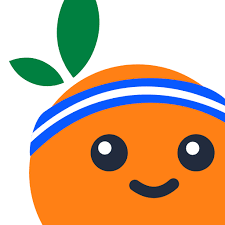
14. Fooducate
Fooducate scans barcodes to give you a food grade (A to D), based on its healthiness. It looks at things like calories, nutrients, and ingredients, flagging things like trans fats and additives. The free version lets you log meals and track the basics, while the premium version gives you more features, including deeper insights.
With its teacher-like vibe, Fooducate gives you a grade on your food choices without being too harsh. It’s a great tool if you like learning as you go and want to understand the “why” behind each food grade.
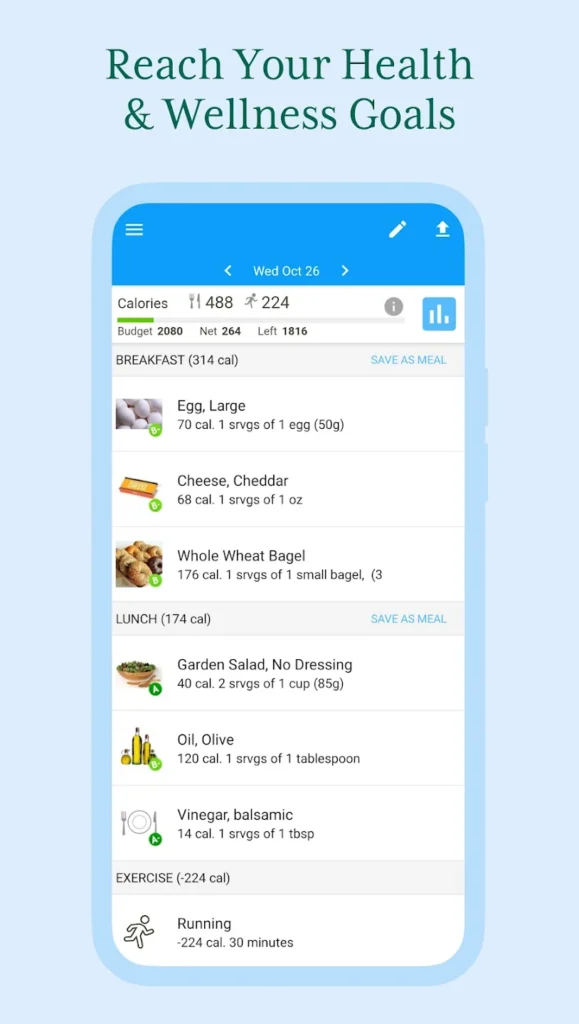
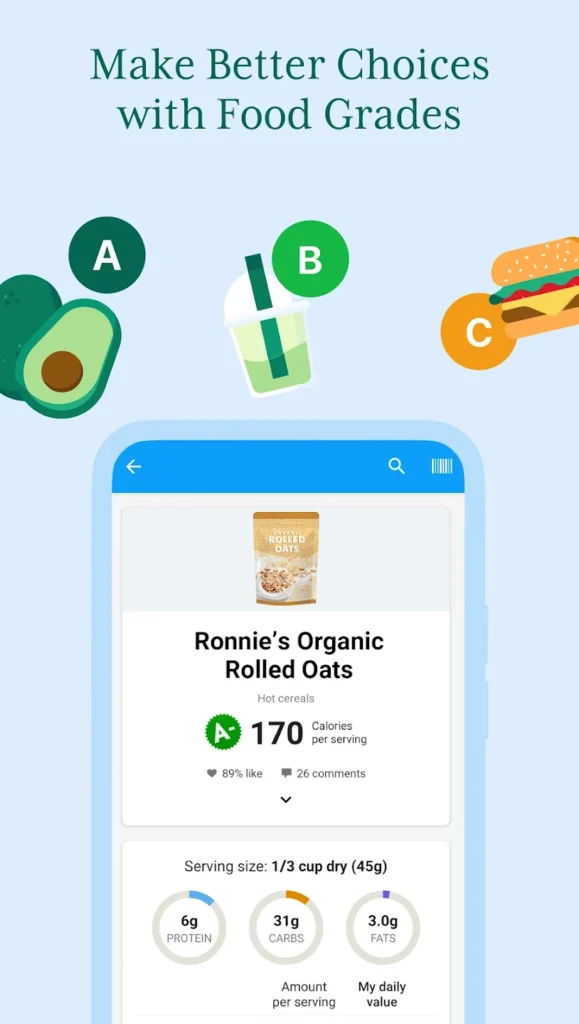
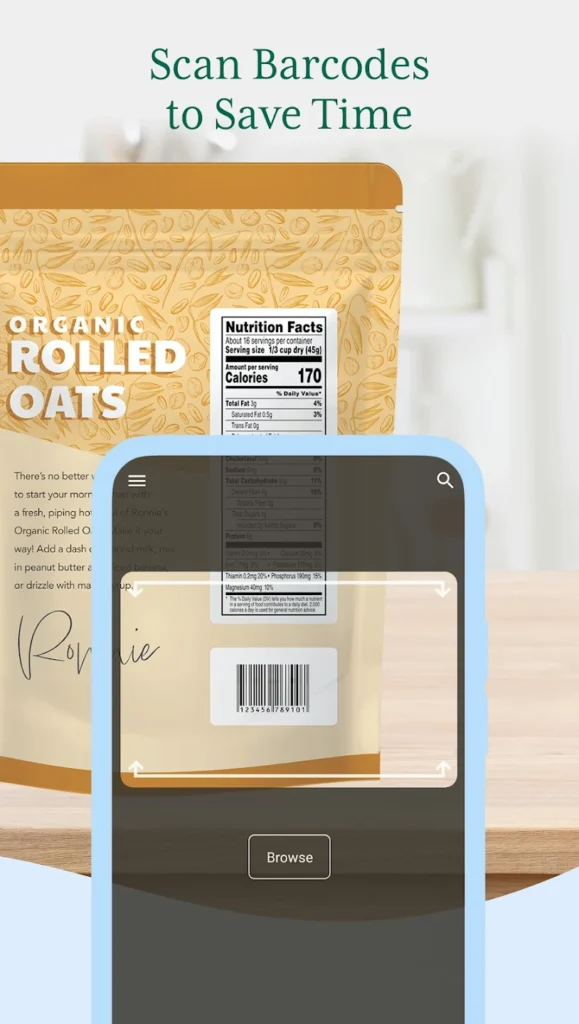
Key Highlights:
- Grades food from A to D for healthiness.
- Tracks calories and nutrients, flags bad ingredients.
- Free for scanning and tracking.
- Explains the reasoning behind the grade.
Who It’s For:
- Learners who enjoy food grades.
- Trackers focused on calories and ingredient quality.
- Shoppers who want to avoid additives.
- People into free, detailed tools.
Contact Information:
- Website: www.fooducate.com
- App Store: apps.apple.com/us/app/fooducate-nutrition-coach/id398436747
- Play Market: play.google.com/store/apps/details?id=com.fooducate.nutritionapp
- Instagram: www.instagram.com/fooducate
- Twitter: x.com/Fooducate
- Facebook: www.facebook.com/fooducate
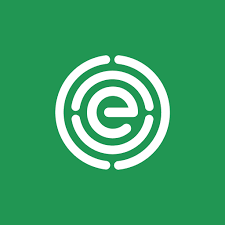
15. EWG Healthy Living
EWG Healthy Living is your go-to for checking food and personal care items for hidden toxins and allergens. It scores products from 1 (best) to 10 (worst), focusing on ingredient safety. It’s less about calories and more about what could affect your long-term health. The free version handles basic scans, and the database is solid.
It has a cautious, science-driven feel, like a researcher warning you about hidden risks in your food or products. If you’re worried about toxins, this one’s for you.
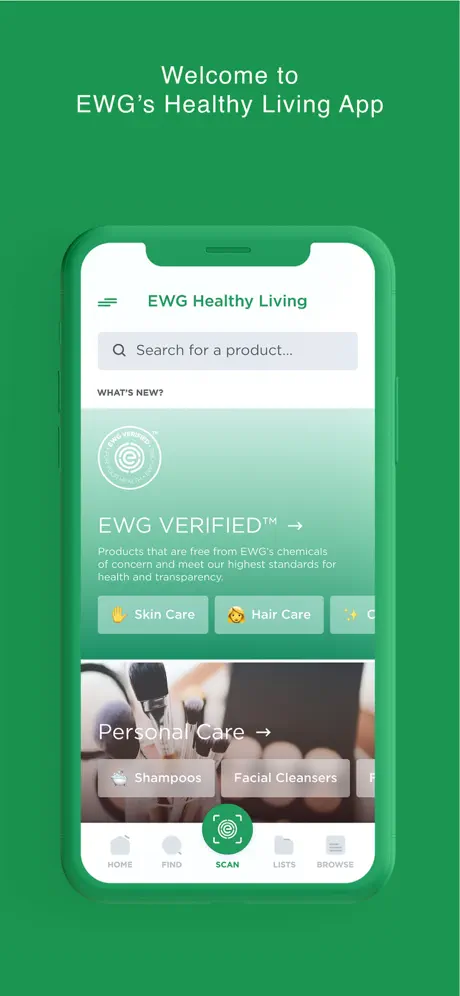
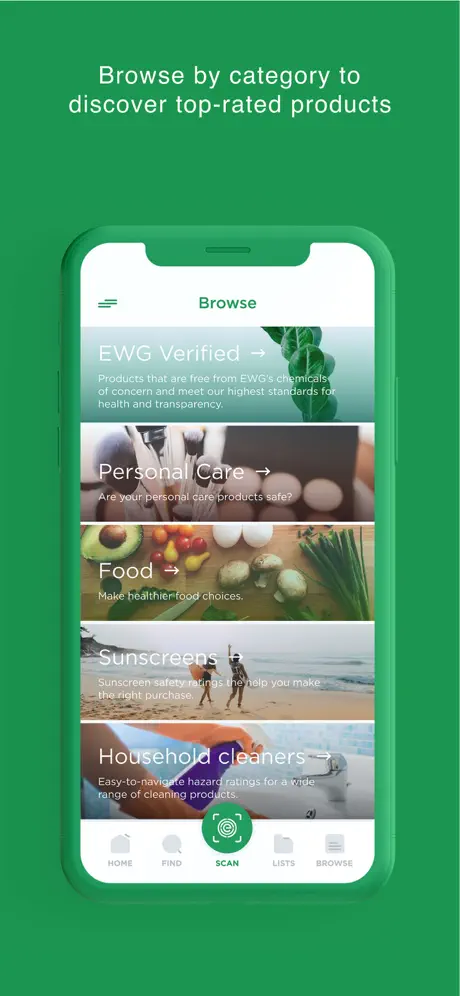
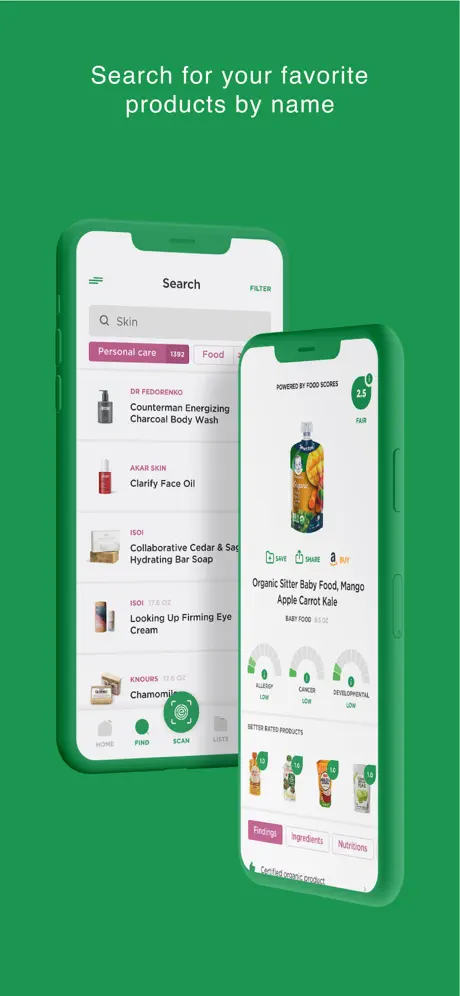
Key Highlights:
- Rates food and personal care products on safety (1 to 10).
- Focuses on toxins, allergens, and risky ingredients.
- Free for basic scans.
- Backed by EWG’s research.
Who It’s For:
- Safety-first folks concerned about toxins.
- Shoppers checking beyond food labels.
- People into science-driven ratings.
- Anyone avoiding harmful ingredients.
Contact Information:
- Website: www.ewg.org
- App Store: apps.apple.com/us/app/ewgs-healthy-living/id703155791
- Play Market: play.google.com/store/apps/details?id=com.skindeep.mobile
- Instagram: www.instagram.com/environmentalworkinggroup
- Twitter: twitter.com/ewg
- Facebook: www.facebook.com/ewg.org
- YouTube: www.youtube.com/@EWG
Conclusion
There you have it – a roundup of some of the best food scanner apps to make your life easier. Whether you’re looking to avoid unwanted ingredients, keep track of calories, or just understand what’s in that bag of chips, these apps are here to help. Each one offers something a little different – some are quick and easy, others dive deep into the details or even help with meal planning. It’s all about finding the one that fits your needs.
Choosing the right one is simple – just pick what works best for your goals. If you’re into clean eating, Bobby Approved or Trash Panda might be your go-to. Got food allergies? Fig or CodeCheck could be lifesavers. Or maybe you just want an easy way to decode labels without feeling like a scientist. Whatever you need, try a couple the next time you’re grocery shopping. You’ll be amazed at how much easier it makes eating better – or at least knowing what you’re actually eating!
